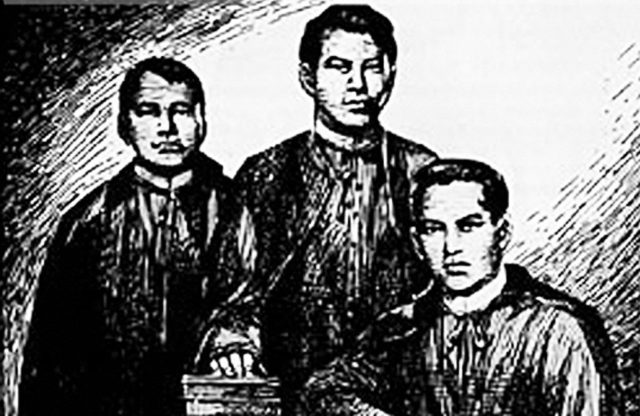On January 20, 1872, the Cavite Mutiny, an uprising of military personnel at the Spanish arsenal in Cavite, took place. This event subsequently led to the execution of the Filipino priests Mariano Gomez, Jose Burgos and Jacinto Zamora, otherwise known as GOMBURZA.
The unsuccessful mutiny was participated in by around 200 soldiers and laborers of the Engineering and Artillery Corps who rose up after their salaries were reduced upon the order of Governor-General Rafael de Izquierdo by subjecting them to personal taxes, from which they were previously exempt.
The taxes required them to pay a monetary sum as well as to perform forced labor or what they called, “polo y servicio.”
The uprising was used by the Spanish colonial government to implicate and sentence to death by garrote Fathers Mariano Gómez, José Burgos and Jacinto Zamora on February 17, 1872 in Bagumbayan, and several other Filipino leaders.
These executions, particularly those of the GOMBURZA, were to have a significant effect on people because of the shadowy nature of the trials. Dr. Jose Rizal dedicated his work, El Filibusterismo, to the executed priests. Many scholars believe that the Cavite Mutiny of 1872 was the beginning of Filipino nationalism which eventually led to the 1896 Philippine Revolution.





